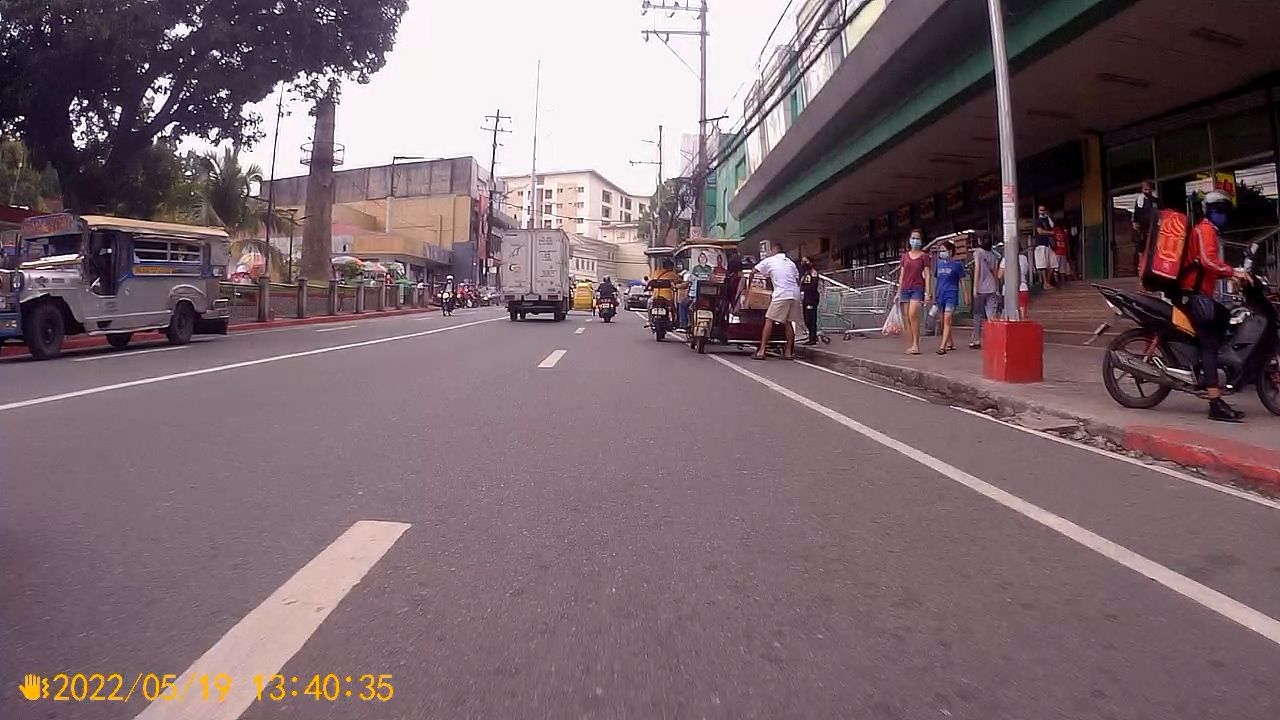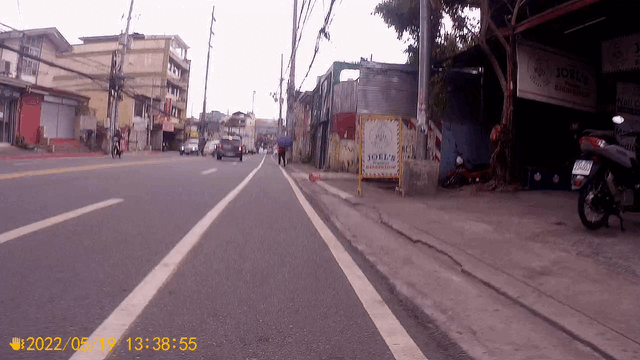TL;DR
- It is usually easier to ride a bike for nearby grocery or coffee runs than it is to ride a bike to work.
- When setting a route, consider:
- Time of day
- Amount of traffic
- Size of road
- Assess your road condition:
- Potholes, road obstacles
- Humps
- Cement, asphalt, or both
- Assess how you'll position yourself:
- When to take the whole lane rather than an unprotected bike lane
- When to bike on a sidewalk
The most important factor that affects whether you'll ride at all is safety, and the most uncontrollable aspect of safety is your route.
Imagine if you were the only person on a flat paved road, riding helmeted and upright on a well-maintained bike. The most that could happen to you is a fall. In this situation, you have control over your speed, protection (helmet), and your bike. It is instinctively apparent that you are more safe on a well-maintained bike riding at a slower pace. But the amount of traffic passing by, or the condition of the road, or the width of the lanes, are all beyond your immediate control.
This is where things get complicated when riding a bike in the city. There are situations where the speed of the cars next to you will matter more than anything else, and there are situations where the road's condition — bumpy, wet, full of holes, and so on — is the greatest danger.
For you to develop your confidence and skill to ride longer, you will need to start on a relatively easy route. If you cannot find one, you will not keep riding.

Choose short, easy rides that you can do a few times a week until you've gotten the hang of riding your bike alongside traffic.
What factors into a safe route?
The following situations provide relative safety, arranged from most to least safe.
| Lane/street type | Examples | Safety |
| Cyclists are separated entirely from motorized vehicles. | Sections of Julia Vargas | 🟢🟢🟢🟢⚪ Safe. |
| A sidewalk where bikes are allowed. | Southern sections of EDSA (Ayala Ave to Magallanes) | 🟢🟢🟢🟢⚪ Safe. You can't be run over by a car. |
| Bike lane protected with bollards or fencing spaced evenly. | Stretches of Ortigas Ave., San Juan | 🟢🟢🟢⚪⚪ Safe-ish, due to the fact that motorcycles can still weave in and out of your lane. |
| Two-lane streets that are congested such that a bike can take the whole lane. | Sections of the Hulo jeepney route | 🟢🟢⚪⚪⚪ Slightly safe. |
| Streets with painted bike lanes but no protection. | Shaw Blvd., QC neighborhoods | 🟢⚪⚪⚪⚪ The least safe. You're at the whim of motorists around you. Motorcyclists will likely ride very close to you; you could get sideswept. |
Safety among motorists boils down to two extremes:
- Having few cars on the road.
- Having enough traffic to slow motorists down to the pace of a bicycle or to a complete gridlock.
- Being highly visible and positioned such that cars or motorcycles cannot sidesweep you.
The size of a road matters
Cyclists are not often seen on large roads such as Commonwealth Avenue or EDSA. The size of the road and amount of traffic can result in cars veering and careening around the lanes, and a bike cannot match the speed of the cars around them.
Many streets in Metro Manila are tight, two-lane affairs with relatively slow moving traffic. In these roads, it is too tight to stay on the right, so a bike can match the speed of traffic, and may take the whole lane with less road rage from cars, because they're all going slowly anyway. When the road frees up or expands, I let the cars overtake me by going to the right, because at that point they're moving faster than me. It is safe for me to move to the right, because cars see me. (Motorcyclists are another story...)
How short is short? Ideas on where to go
Start with 1-2 kilometers per way.
Some suggestions for your first foray into the streets:
- Convenience stores, such as Ministops and 7-11s
- Fast food joints
- Panaderias
- Palenkes
- Milk tea/coffee cafes
- Restaurants
You'll want to reward yourself for making it or feel accomplished by knocking a chore off the list. Think of a few places you'll want to go to then rank them by safety. Choose the safest place first then as you gain confidence knock the rest of the list off.
If possible, bike as early as your destination and schedule allows you to. Biking before 7am ensures fewer vehicles. A next-best time window is after the morning rush, but before lunch: around 9am to 11am.
Getting the hang of it
You'll know you're getting better by how you feel: your apprehension will eventually be replaced with confidence, you'll know how harsh a bump you'll be in for when you fail to slow down on a hump, you'll improve your judgement when tailing a car across an intersection or know when to stop when a pedestrian or car crosses your path.
You'll anticipate higher terrain by shifting to an easier gear and get a feel for how your brakes work. Your ears will recognize when a car is coming in from behind -- and most importantly, you'll realize that your ears may not always pick up a motorcycle speeding past an intersection without checking for potential crashes. You'll be surprised by motorists coming in out of nowhere because of a blind spot caused by parked cars or congested traffic.
You'll make split second decisions, some of them wrong, when you choose to push past a yellow light.
Take the whole lane, not the (unprotected) bike lane
Much of Manila does not have protected bike lanes. When planning a route with this in mind, include in your assessments how much of the route you can stay in the middle of the lane or on a sidewalk. Being in the middle means "taking up the lane" and not biking at the right side (the bike lane).

An unprotected bike lane just means that someone spent some money on paint and labor. It is not a deterrent to motorcyclists, which then become a hazard right in your lane.
Secondly, pedestrians will walk on bike lanes in places where there are no sidewalks. This now places you in between them and motorists. You are squeezing out the pedestrian while being squeezed out yourself: not a safe position to be. In such a tight situation, don't overtake the pedestrian until the motorist has passed you by.

Sidewalks with few to no pedestrians are an option as well. This is how people bike in some southern sections of EDSA. Sidewalks with enough space for pedestrians and cyclists are an option as well, but within good taste: pedestrians shouldn't feel unsafe around us. Ride slow and give pedestrians priority: we're in their world now.
Is it really this hard to ride a bike in Metro Manila?
The ease or difficulty of riding a bike depends on when and where you ride a bike as much as a good instinct for riding. The MMDA has released 2021 figures which assess which part of the Metro has the most number of accidents as well as the least safe time periods. There's nothing wrong with riding recreationally or riding only as far as the nearest market, or riding only at a certain time.
That being said, some factors are in our favor:
- Congestion keeps cars from going too fast.
- Trucks are not allowed in small streets.
- Cyclists are able to get off their bikes and walk off the street.
As with all things: nothing ventured, nothing gained.


